Charlotte Mason and Living Math: A Complete Guide
How do you do math the Charlotte Mason way?
Math in the Charlotte Mason homeschool can feel like an outlier. You may not use beautiful living books. There might even be worksheets. It can be difficult to see how to bring what is often seen as a dry, systematic subject into the full, vibrant life that we expect from our literature and history homeschool lessons. If we happened to have negative experiences with math ourselves as children, this is doubly challenging.
But while we may feel discord between math and the rest of our Charlotte Mason homeschool, Charlotte Mason herself did not view math as a separate, unfortunately necessary subject. And while she did not write nearly as much about math as about other subjects, there is much more in her writing that unifies math with the rest of the curriculum than divides it.
In this post, I’ve attempted to draw together these unifying ideas about math in the Charlotte Mason homeschool. When we understand the principles, it is easier to understand why and how to teach math in our homeschools. I’ve also tried to answer many of the questions I’ve noticed about doing math the Charlotte Mason way: am I doing it wrong if I use a modern curriculum? What about memorizing math facts? I hope you’ll find this information edifying, enlightening, and useful.
Before you read on, let me point out that as a complete guide, this is a very long post. More than 6000 words, in fact! To help you navigate, I’ve included a table of contents below. I’ve also created a digital download pack. Choose your own price to receive a beautifully formatted printable PDF, as well as files for your eReader and Kindle.
Table of Contents
- What does Charlotte Mason say about math?
- Is Charlotte Mason's writing about math still relevant today?
- Do I need living books to teach math in my Charlotte Mason homeschool?
- How do you teach math the Charlotte Mason way?
- What is the method of a Charlotte Mason math lesson?
- What does math look like for young children in a Charlotte Mason homeschool?
- What curricula can you use to teach math the Charlotte Mason way?
- What curricula did Charlotte Mason's schools use? Should I use that?
- How can I make math a fun part of my Charlotte Mason homeschool?
- What do I do if I'm not confident in math? Where can I get help?
- Will a Charlotte Mason education give my child a strong foundation in STEM?
- Should my child memorize math facts? Or is that against the Charlotte Mason philosophy?
- What if I want to learn more about Charlotte Mason's philosophy and mathematics?
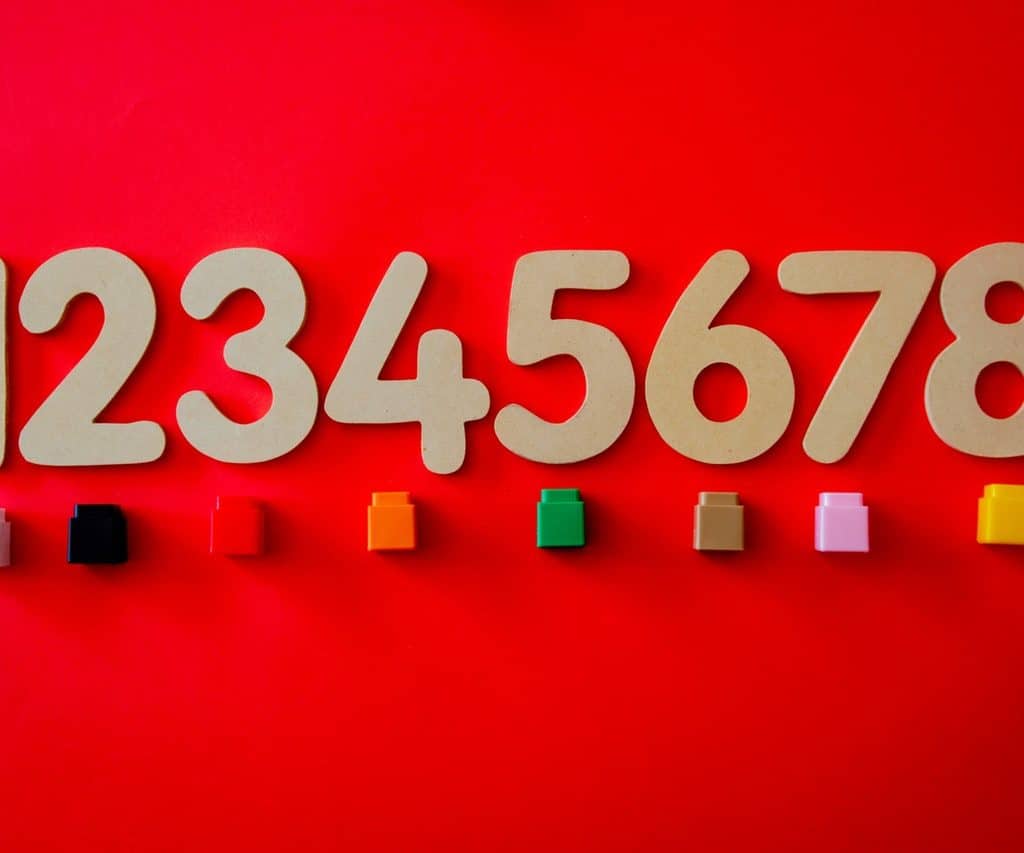
What does Charlotte Mason say about math?
While Charlotte Mason makes several mentions of math throughout her published volumes, there are two places where she talks about the subject at length. In her first published work, she includes a chapter named Arithmetic, where she explores why children should learn math and how it should be taught in the earlier years of formal schooling.
In her sixth, and final, published book, Charlotte Mason includes a section on mathematics in the chapter “The Knowledge of the Universe”. As in her first volume, Charlotte Mason is considering why mathematics should have a place in the curriculum. From these two chapters, we can start to put together the key principles behind teaching math in a Charlotte Mason homeschool. These principles show us the similarities between math and other subjects we teach in our homeschools, which is encouraging and helpful if we don’t feel confident or are unsure where to begin.
Principle One: We should study math because it is beautiful and true.
I spent a couple of semesters at college as a math education major. In one class, I distinctly remember a professor asking why children should learn math. I promptly replied, ‘So they can learn logical thinking and reasoning skills’. Or something to that effect at least!
In Home Education, Charlotte Mason says something to a similar effect, but by the time she published Philosophy of Education, her thinking had shifted. Math is not a utilitarian subject. It’s not something to study because it will make us smarter, more logical, or get us ahead in life. We study math because it is beautiful and true, and because the subject is yet another avenue towards the knowledge of God, the most important knowledge we could have.
Math is lawful and ordered. God is lawful and ordered. Charlotte Mason writes in Philosophy of Education that “It is a great thing to be brought into the presence of a law, of a whole system of laws, that exist without our concurrence,—that two straight lines cannot enclose a space is a fact which we can perceive, state, and act upon but cannot in any wise alter, should give to children the sense of limitation which is wholesome for all of us, and inspire that sursum corda which we should hear in all natural law.”
The study of mathematics gives us a special opportunity to come in touch with the unchangeable character of God. This is why we study math, and, in fact, why we study any subject at all: because as we grow in the knowledge of the good, true, and beautiful, we grow in the knowledge of God. This principle shows us our purpose in teaching math.
Principle Two: Mathematics is a living subject, and is taught through the presentation of living ideas.
Even as a math major, I would never have said that math classes were life-giving, or even the most interesting classes I took. I definitely had math classes that were straight-up boring. Was this your experience in math? Maybe you could work the problems and pass the class, but the subject held no special interest and you were glad to be done with it.
Charlotte Mason believed that mathematics has the power to capture our children’s interest and imagination. In this, it is very similar to any other subject we include in our curriculum. She wrote in her second volume that “All the thought we offer to our children shall be living thought; no mere dry summaries of facts will do; given the vitalising idea, children will readily hang the mere facts upon the idea as upon the peg capable of sustaining all that is needful to retain.”
While Charlotte Mason goes on to write that the teacher is responsible for presenting the living ideas of mathematics to the student (rather than reading from a book), there is otherwise no distinction between this subject and any other included in a Charlotte Mason curriculum. There is no place for what she calls the ‘dry-as-dust’, whether we are teaching history, geography, math, or any other subject. This principle shows us the means of teaching math: the thoughtful presentation of living ideas. I talk more about how we can go about this in a later section.
Principle Three: Math is one part of a wide curriculum
Charlotte Mason’s writing on mathematics is only a small fraction of her writing overall. It’s easy to fall into thinking that she simply didn’t think the subject was that important.
I don’t believe this was the case. Instead, I think she minimized her attention on the subject because, culturally, it was receiving too much attention. She wrote in her volumes that it was easy to examine in mathematics, that students often crammed in mathematics in order to pass university entrance exams.
Times have not actually changed much. Mathematics is still a highly tested, highly compared field of study, with international league tables and student success rates computed and analyzed, to the detriment of the students. So as much as we can relate to Charlotte Mason’s lack of writing on the subject, we still benefit from looking at what she did write.
Far from believing that math isn’t as important as more literature-based subjects, Charlotte Mason wrote that “education is a science of proportion”. Math has a rightful place in the curriculum, but only so much of a place. It is neither better nor worse than other subjects. We should not hang too much store by it: a child can be very logical in solving math problems and find that the mental ability doesn’t translate well to other areas of study, or even life in general. However, we should not limit our children’s opportunity of expanding their knowledge in this area and thereby cutting off an avenue toward the knowledge of God.
I think Charlotte Mason would have had strong opinions against any curriculum that holds up certain subjects as more useful or more worthwhile than another (see my comments on Charlotte Mason and STEM). We need to aim for proportion in our curriculum.
I hope these principles start to give you a sense that mathematics is not that different to the other subjects we teach in our Charlotte Mason homeschools. We study math, in a living way, in its appropriate proportion, because it leads us Godward.
Is Charlotte Mason’s writing on math still relevant today? Is it out of date?
Charlotte Mason’s writing on education is based on principles – principles that don’t expire. Much of her writing, including her writing on mathematics, is still timely and relevant to us today, even though we live a hundred years later. Therefore, if you are interested in and are aiming to follow the Charlotte Mason philosophy, then her writing on math is extremely relevant to your practice as an educator.
What’s more, many of her ideas are corroborated with current research. For example, Charlotte Mason wrote that mathematics “depends on the teacher, not on the textbook”. Direct instruction in mathematics is a consistent predictor of achievement in first grade math. This means that we don’t rely on a child to learn math on their own with no direction. We clearly present the living ideas and concepts of mathematics to the child, in a slow and graduated way
As another example, we also see an emphasis on understanding mathematical concepts rather than mechanical processes. This is an idea explored in the book A Mind for Numbers. It’s possible to apply a process to a math problem and even come to the right answer, without appreciating or understanding the concepts behind it. We develop an illusion of competence, where we believe we understand an idea, but in reality we simply know how to move numbers around in a patter. Charlotte Mason wrote that math needs to be driven by a “sense of must”. We must consider the problem, and see what we must do because the problem requires it, not because we’ve learned a computational pattern. When we, or our children, have a deep, conceptual understanding of a mathematical principle, we are able to solve problems because of the principle, because we must do it that way.
There are more examples of the relevance of Charlotte Mason’s philosophy to modern research, and many of these come up in the book A Mind for Numbers, which is certainly worth reading. I would like to give one caveat, though. Charlotte Mason’s writing on mathematics is relevant today, but it may not be complete. I don’t believe you can derive a complete K-12 math curriculum directly from Charlotte Mason’s writing, at least from her published volumes. She did not write her own math curriculum for her schools. Instead, she looked for a curriculum that allowed and encouraged math to be taught in a way that aligned with her principles. See: What curricula can I use to teach math the Charlotte Mason way?
Do I need living books to teach math in my Charlotte Mason homeschool?
No, and to appreciate this answer, it helps to understand why we use living books in Charlotte Mason homeschooling in the first place.
Charlotte Mason taught that because they are persons, children need to come in touch with living ideas. These ideas enliven a child’s mind by prompting thought and reflection. Think about the phrase ‘the mind is whirring’. In order to communicate living ideas to children, Charlotte Mason encouraged teachers to use living books for most subjects – like literature, history, and geography. A living book is well-written and inspiring, fiction or nonfiction. Charlotte Mason believed that books are often better than a teacher communicating living ideas because they are written by passionate experts, are well thought out, and are structured in the best way to communicate the subject matter in an interesting and helpful way.
However, Charlotte Mason makes an exception for mathematics. She wrote in Philosophy of Education that “Mathematics depend upon the teacher rather than upon the text-book.” In the Charlotte Mason philosophy, mathematics, like all other subjects, depends upon a child taking in living ideas, but instead of the child finding these in a book, it is the responsibility of the teacher to present them to the child.
We do not need to seek out beautiful living books in order to teach mathematics. We also don’t need to shy away from explicit instruction in mathematics, for fear that we are getting in the way of our children connecting with the subject’s living ideas, in the way that we refrain from lecturing or moralizing at our children after a literature or history reading. In this subject, it is our responsibility to bring the living ideas to the table.

How do you teach math the Charlotte Mason way?
Charlotte Mason continues from the above quote that, “few subjects are worse taught [than math]; chiefly because teachers seldom have time to give the inspiring ideas, what Coleridge calls, the ‘Captain’ ideas, which should quicken imagination.” In order, then, to teach math the Charlotte Mason way, we need to take the time to give inspiring ideas to our children.
Because math is logical, lawful, and ordered, we don’t often think of the subject as imaginative or even inspiring. However, it is clear that from Charlotte Mason’s perspective, “every fruitful idea, every original conception, whether in Euclid, or grammar, or music, was a direct inspiration from the Holy Spirit.” (Parents and Children). What’s more, the Holy Spirit instructs and illuminates all areas of knowledge, and that in order to cooperate with the Holy Spirit, we need to present the living ideas of mathematics to our children, for ‘that which is dead, dry as dust, mere bare bones, can have no affinity with Him, can do no other than smother and deaden his vitalising influences.”(parents and children).
What are living ideas in mathematics?
Charlotte Mason never explicitly addresses this question in her writing; however, I’d like to offer a few ideas of my own. Mathematics is the study of pattern. Pattern in number (arithmetic), shape (geometry), chance (probability), occurrence (statistics), and on and on. I believe that patterns are living ideas, and that this is a broad principle that holds over all branches of math.
Consider early arithmetic. One key pattern that will turn up in many curricula is that of composition, the ability to break down a whole number into combinations of smaller whole numbers. Children will learn that the number 2 can break down into 1 and 1, that 3 can break down into 1 and 2, 2 and 1, or 1 and 1 and 1. There are many patterns to discover within the greater pattern of composition of number, but ultimately, children come to see and accept that no matter how large the number, it can be broken down into smaller whole numbers.
Patterns like this make up the living ideas of mathematics because they have the ability to produce precisely what a living idea in a book can produce: thought. The moment our child understands and accepts a mathematical pattern, the brain moves into motion, seeing and applying that pattern in many places. The small patterns children have learned about 2 and 3 always breaking down into the same combinations of numbers joins up to show them how 4 and then 5, and eventually all numbers, decompose. How thrilling to come in touch with this unalterable rule for the first time!
What is the method of a Charlotte Mason math lesson?
In Home Education, Charlotte Mason writes about the method of a lesson, illustrating every step from preparation to narration and beyond. The method she writes out is for subjects that use living books, but I believe that we can draw parallels between this method of a lesson and her writing on mathematics, in order to develop a plan for a living math lesson. (If you’d like a cheat sheet for the general form of a Charlotte Mason lesson, you should sign up for the mailing list to the podcast I co-host, Thinking Love.)
Prepare the lesson.
First, we need to prepare the lesson. For a literature-based lesson, we would carefully choose a book, plan to read consecutive passages, and pre-read. For mathematics, we have similar principles. Charlotte Mason wrote that mathematics should be ‘slow’ and ‘carefully graduated’. As we prepare for the math lesson, we should see that the concept we plan to teach is a logical ‘next step’ from what our student has learned so far. We also need to make sure that we understand the ‘captain idea’ for the lesson. What is the pattern or rule that our child is learning? A good teacher’s guide, if you are using one, should make this clear. This is also the time to prepare any manipulatives, exercises, or activities that you will need to present the lesson.
Give a brief review and increase anticipation.
Second, we begin the lesson. A literature-based lesson begins with a brief review of the previous lesson, with a view to connecting the new material with what has already been covered. This is an excellent approach to a math lesson as well. We can open the math lesson by reminding our student, or asking her to recall the captain idea from the previous lesson, and possibly working a review problem. Some math curricula will have this review built into the lessons plans.
Charlotte Mason tells us to continue the lesson by “sharing a few words about the lesson to increase the child’s anticipation”. In math, this can be as simple as telling our child what the lesson will cover and what he will be learning. For example, you might tell your child, ‘Last week we learned all about the number eight, and all the ways you can make up eight from smaller numbers. This week we are going to do the same thing with the number nine. We’re going to look at what numbers add up to the number nine.’
Present the new idea for the lesson.
Third, we present the living idea for the lesson. In the example above, this might look like bringing out manipulatives so that you and your child can illustrate the composition of the number nine. This might include you working out an example problem for the student.
Ask for demonstration.
Fourth, the child demonstrates the new concept. Charlotte Mason uses the example of demonstrating multiplication tables by laying out rows of beans. This could also include the child practicing a math problem that relies on the concept. My personal belief is that demonstration in mathematics serves as a parallel to narration in literature-based lessons.
In narration, the student is asked to tell back what they have read in their own words. In demonstration, the student is asked to show to the instructor the principle they have been taught, by means of their own effort, in their own way. In Know and Tell, Karen Glass writes, ‘…it is not possible to narrate something unless you know it…What we know, we can narrate.’ Similarly, it is not possible to demonstrate a concept in mathematics unless you know it. What our children know, they can demonstrate, whether through laying out beans, talking through their thought process out loud, or showing their work.
Crucially, though, the work must be the child’s own. Just as in narration, we cannot pull a child through the process and trust that they know it – they are the ones who must do the mental ‘digestion’ of the principles and ideas of the lesson. Charlotte Mason warns against ‘copying, prompting, telling, helping over difficulties, working with an eye to the answer which he knows’. These actions on the part of the teacher allow many bad habits that will hinder the child and their study of mathematics.
End with a little talk.
Fifth, and finally, a Charlotte Mason lesson would end with ‘a little talk’ about the passage that has been read, encouraging the student to ask questions or (for older students) take notes. I don’t think this means we should disallow questioning in other parts of the lesson, but that there should be particular time at the end of the lesson to review and summarize the key idea presented, take notes (this would likely be more appropriate for older students noting formulae or theorems discussed), or wonder together about applications of the captain idea.
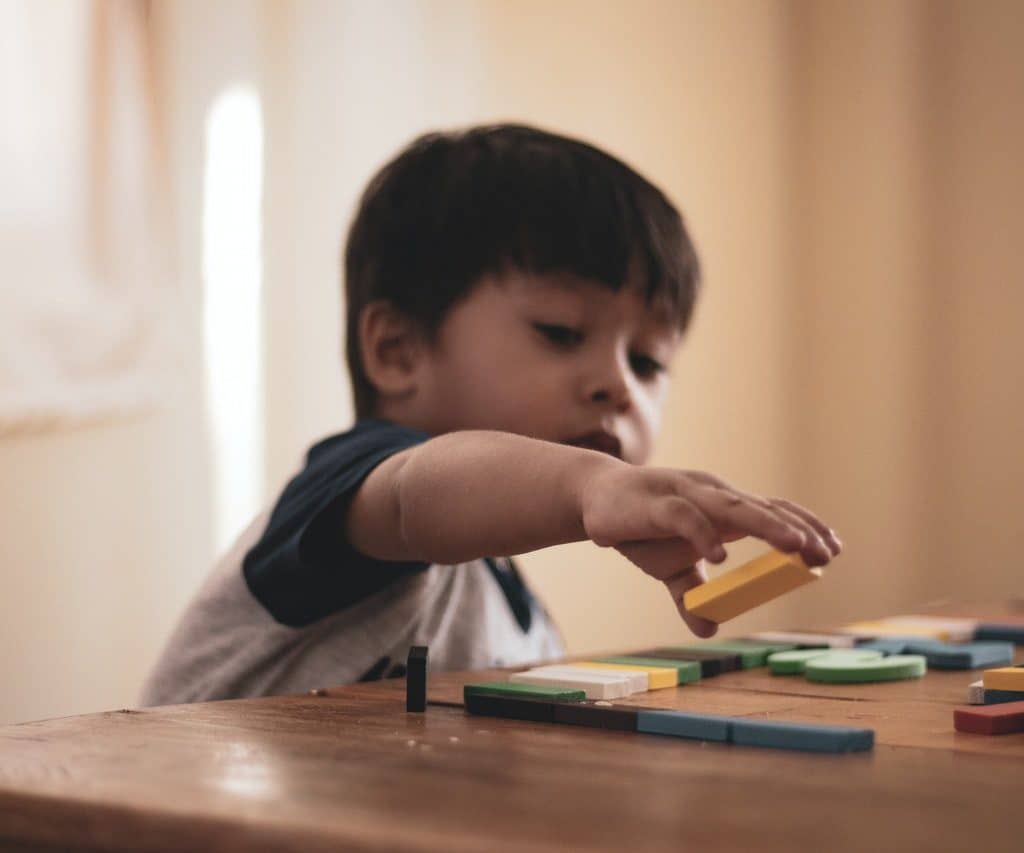
What does math look like for the early years in a Charlotte Mason homeschool?
It’s commonly known that Charlotte Mason advocated delaying formal lessons until a child reached the age of six. Rather than sitting through structured lessons, she believed that children should learn primarily through their senses, through the atmosphere of their home, and by parents helping them establish good habits.
While we don’t need to purchase a formal math curriculum for our young children, this doesn’t mean that we don’t teach our young children math. Mathematical concepts will occur naturally as a child plays, helps around the house and in the kitchen, and converses with adults. It is also possible to introduce mathematical concepts in a relaxed, playful way, as illustrated in this Parents’ Review article on “First Lessons in Arithmetic”. While Charlotte Mason did not write the article, she did edit the magazine, and so we can speculate that she would not have held an issue with the ideas presented.
A modern book along the lines of the Parents’ Review article, and including a more comprehensive collection of relaxed games and activities, Preschool Math at Home by Kate Snow (affiliate link) is a wonderful resource. It is important to note, however, that before math games and activities, Charlotte Mason would have children spend copious time outdoors, initiating their own games, play, and activities. Math lessons, however informal, should not take priority over this ‘gentle and quiet’ lifestyle.
What curricula can you use to teach math the Charlotte Mason way?
I am not an expert in math curricula. There are many options used in Charlotte Mason circles, and many people who can give first-hand insight into using them. However, based on Charlotte Mason’s principles, I think we can help ourselves make good decisions about math curricula for our children.
1. Can you, the teacher, easily identify the living ideas for each lesson?
It is your responsibility, not the book, to communicate the living idea. Look at the teacher’s guide and the lesson plans to see if you will be able to use it to present math in a living way.
2. Is the curriculum carefully graduated?
Most reputable math programs will be put together in a way that slowly moves a student upwards from the absolute basics. If a math program seems haphazard or you can’t follow the line of development, it may not be for you.
3. Is review and repetition built into the program?
In Method of a Lesson, Charlotte Mason wrote to begin a lesson by spending a short time reviewing what was taught in the previous lesson. In mathematics, review is essential. Children need regular opportunities to recall what they have already learned. In modern terms, you may see this referred to as retrieval practice.
A word on spiral vs. mastery math curricula:
There are two general types of math curricula available. On the most basic level, spiral math curricula will introduce a concept, move on to another concept, and then circle back to review the first concept. The curricula regularly moves between reviewing an older concept, developing the current concept, and introducing a new concept. A mastery math curricula will work through each concept until a child has mastered it, and then move on, in a logical order.
From reading Charlotte Mason’s chapter on arithmetic, she seems to describe a mastery-style mathematics curriculum, mentioning that children should work on a concept until “he has mastered the idea”. However, I don’t think we need to take this to mean a spiral curriculum would be un-Charlotte Mason – it simply was not an option during her lifetime.
Knowing that Charlotte Mason expected science generally, and the study of neurology specifically, to continue to advance after her lifetime, I personally think that if she were alive today, she would at the very least find much to interest her in a spiral-style curriculum: namely, that regularly recalling and practicing math concepts is crucial to long-term memory (spaced repetition), and that revisiting topics over time can allow our minds time to process and understand concepts better (this is often known as diffuse thinking).
Ultimately, we will never know whether Charlotte Mason would have ‘approved’ of using a spiral curriculum in mathematics. However, I firmly believe that the approach has merit and that we have the freedom to choose.
Pin this post to find later!
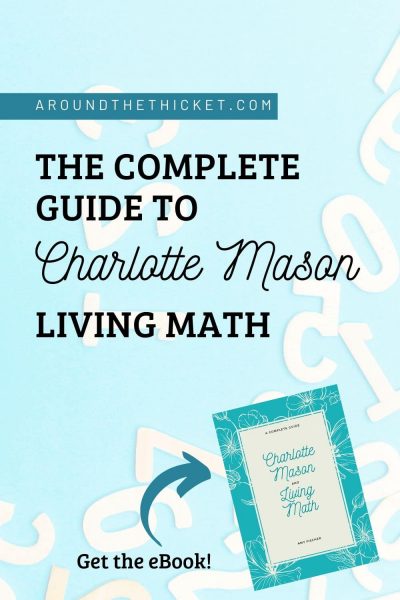
What curricula did Charlotte Mason’s schools’s use? Should I just use that?
Charlotte Mason mentions a few resources for math curricula throughout her volumes, but more helpful is the programs of study published by the Parent’s National Education Union for subscribing schools and homeschools. Here is a selection – limited to books I was able to find available to read free online.
- Practical Exercises in Geometry (Form II)
- Lessons in Experimental and Practical Geometry (Form II)
- The Science and Art of Arithmetic (Form II)
- A School Geometry (Form III)
- A School Algebra (Form III, IV, V, VI)
- A Shilling Arithmetic (Form III)
The PNEU programs also encouraged practitioners to read and make use of the pamphlet The Teaching of Arithmetic to Young Children, which has been transcribed and made available by Charlotte Mason Poetry.
While these books can offer insight and interest, the question follows whether we need to use these curricula in order to implement the Charlotte Mason philosophy when teaching math. I believe we need to be cautious about trusting too much to curriculum choice to bring the Charlotte Mason philosophy to life. Choosing the same books or the math curriculum that were used in her schools is not a guarantee of success.
Charlotte Mason clearly believed that it is the principles that matter, rather than the nitty-gritty details of curriculum. If we don’t grasp the principles behind living mathematics, then we will struggle, regardless of our curriculum.
Therefore, I don’t believe that it is essential to use the books used in Charlotte Mason’s school, and there are some reasons to specifically not use them: they can be hard to find, expensive, set problems using ‘old money’ (the pre-decimal currency used in the United Kingdom until the 1970s), and it may be challenging to find community and support in implementing the curriculum.
How can I make math a fun part of my Charlotte Mason homeschool?
Many parents want to make math fun for their children, and there are certainly many resources for math-oriented games, songs, and apps. However, Charlotte Mason never concerned herself with how to make learning fun. Instead, Charlotte Mason believed that learning any subject should be delightful in itself, and enjoyable without gimmicks or tricks.
There are a few conflicts between Charlotte Mason’s philosophy and attempting to make math fun. First, Charlotte Mason believed that children have a strong intrinsic drive to learn from birth. This is not a desire that needs external motivation – it simply needs to be protected. We can certainly enjoy a subject, play math games, sing songs, and have fun in lessons, but we should be very cautious if we find ourselves thinking, ‘Perhaps if I could add in this fun activity or game, my child will start to like math’.
This is due to a second conflict. Charlotte Mason firmly believed that math is worth studying for its own sake.
As I wrote above, the reason mathematics is included in a Charlotte Mason homeschool is that it is beautiful and true. These qualities are intrinsic to mathematics and this is what we rely on to motivate our children in the subject, rather than gimmicks.
Finally, attempting to make math fun sends our children crucial messages about the subject – messages that contradict the idea that math is worth studying for its own sake. If we feel we need to make math palatable to our children, we are subtly telling them, ‘Math isn’t good in itself. It is an obligation – something to get through.’ It’s a bit like hiding pureed vegetables in chocolate brownies. Our expectation is that our children won’t like what is good in itself and good for them – and our actions affirm this message to them.
Charlotte Mason had the highest opinion of children and their motivation to learn. She didn’t believe that we need to hide math under a veneer of fun in order to convince our children to learn it. Our children are hungry to learn, and math, like all other subjects, simply needs to be brought to the table. For Charlotte Mason, the question is never, ‘How can I make math fun?’. Instead, the question is, ‘How can I teach math in a living way?’
Charlotte Mason didn’t believe that every child needs to be a mathematical genius or to go on to have a career in STEM. She recognized that not every student is going to develop a strong affinity with the subject – just like we may have neutral opinions about certain healthy foods. Therefore, math needs to have an appropriate portion in a child’s education and teachers need to present it in a living way, keep any of our own negative attitudes towards the subject at bay, and then trust the Holy Spirit for the rest.
This doesn’t mean that we have no recourse if our children are struggling, stuck, or unmotivated in math. In her volume Ourselves, Charlotte Mason likens the study of mathematics to climbing in a mountain range. It is hard, strenuous work, but the views from the summits are awe-inspiring and worth every effort. Last year, I climbed England’s highest peak with my husband. To be honest, it was not fun. It was very hard work, and more than once I wished we had chosen a different activity. Despite this, my joy at reaching the summit and sense of accomplishment at making it made the time and effort worth it (even though the summit was in cloud and we had no view!).
If we appreciate math like Charlotte Mason did, we see that asking it to be fun is asking the wrong question. Yes, we can stick to the flatlands where our kids find it easy and enjoyable, but if we don’t start up the foothills they will not build up the strength to make it to the bigger summits, and they will never have the opportunity to enjoy the ‘mountain-top’ experiences that only come with reaching higher vistas.
Instead of attempting to make math fun, we can heed Charlotte Mason’s instruction to make math living. The pressure comes off of us to convince our children that the subject is worth their time, and we let the joy of progressing into the mountains do the work of motivating our children.
If your child is particularly resistant, think about what you would do on a challenging hike with your child. You might:
- Slow down your pace
- Take a short break
- Revel in your progress
- Lighten your child’s load by taking a bit out of their pack
- Look for a route that is less steep
- Do your part to be a cheerful hiking companion
Likewise, with math, there is always the option to slow down, do a bit less at each math session, take a brief break, spend some time reviewing what you’ve learned already, look for supplemental materials to teach and practice a concept in a different way, and do your part to happily walk with your child through their studies. (I particularly like Mystie Winkler’s ‘Friendly Math Tutor’ approach – see her second point).
What do I do if I’m not confident in math?
Not everyone has grown up with a positive relationship with math, and many adults have some level of math anxiety. If you don’t feel confident in math, then here are a few ideas to consider.
- Take every precaution to prevent passing on a negative attitude towards math to your children. Even if you don’t love math, that doesn’t mean that it isn’t worthy of study, and it certainly doesn’t mean that your children have to feel the same way. Remember that in the Charlotte Mason method, math is studied because it is beautiful and true. We can model, at least, a neutral, matter-of-fact attitude toward math, refrain from complaining, or making negative comments to our children.
- Proceed slowly. If you are at the beginning of your child’s math education, you have the opportunity to fill in your own understanding of the subject. Be a student along with your child, and take your time to research a math curriculum that helps you identify and understand the living ideas of mathematics in a way that captures your interest.
- Be open to other options. Students learn mathematics best through direct instruction. But that doesn’t necessarily need to be you, especially as your student gets older. There are many free resources available online. Sometimes the other parent steps in to provide instruction. I have seen several veteran homeschool moms state that they wish they would have hired a math tutor at a certain point. We need to be honest with ourselves about our abilities, and plan accordingly.

Will a Charlotte Mason education give my child a solid foundation in STEM?
There is no reason why Charlotte Mason homeschooling would not give a child a solid foundation in STEM subjects. While technology and engineering were not subjects taught in her school, she certainly gave time and space to the study of mathematics (arithmetic in the elementary years, moving on to algebra and geometry in later years) as well as the study of science, using nature study as a foundation. Given that we are educating one hundred years after her lifetime, it is reasonable that we would include subjects such as technology and engineering in our homeschools.
What a Charlotte Mason education will not give a child is an education skewed towards any particular subject. Charlotte Mason wrote, ‘Education is a science of proportion’. STEM subjects have an appropriate place in education – so does literature, art, handicrafts, geography and more. When we follow the Charlotte Mason method, we do not expect or even encourage a child toward any particular career, but we do encourage a child to develop a positive relationship with as many subjects as possible, and, as the child grows, to pursue their interests and passions as an extension to their formal studies.
We are a Charlotte Mason homeschool. Should my child memorize math facts? Or is that considered dry-as-dust and drill-and-kill?
Memorizing math facts is a bit of a contentious issue in the world of mathematical education at the minute. But the short answer to this, particularly from a Charlotte Mason point of view and corroborated by current research, is ‘at the right time’. Charlotte Mason when writing about arithmetic in Home Education puts a lot of emphasis on children proving math facts to themselves. This means that a child should spend a lot of time using manipulatives to demonstrate addition, subtraction, multiplication, and division facts to themselves.
This demonstration (or as I mention above, mathematical narration) works against illusions of competence, a modern phrase that describes thinking you know something, without knowing it in reality. It is very easy to trick ourselves into thinking that we understand a new concept we have learned, but realize when we attempt to use that concept that we don’t actually get it. Demonstrating math facts, like narration, shows us exactly where we don’t understand what is going on.
However, once a child thoroughly understands the concept (whether addition, subtraction, multiplication, division), then it would be appropriate for children to memorize math facts. Fluency in math facts, at the very least, simplifies further studies since children don’t have to take time to calculate an answer when they know it automatically. Here is a short post on why knowing math facts is helpful from a neurological point of view. From my own experience studying for a math degree, calculators were rarely allowed on exams. Professors, more interested in your work and problem solving than on your calculating, deliberately kept calculations within the range of elementary-level math facts. Knowing those by heart saves time and free up the mind for the actual test questions.
How can I learn more about Charlotte Mason and math?
The best way to learn more about Charlotte Mason and math is to read her own words on the subject. In Charlotte Mason On: Living Math, I’ve collected the most helpful, relevant passages from Charlotte Mason’s six volumes to help you develop your own understanding of her method and how it applies to mathematics. Find out more about this workbook and the wider series here.
If you would like to practical training in the Charlotte Mason method and how it applies to your math lessons, join my on-demand video training on How to Teach a Living Math Lesson.

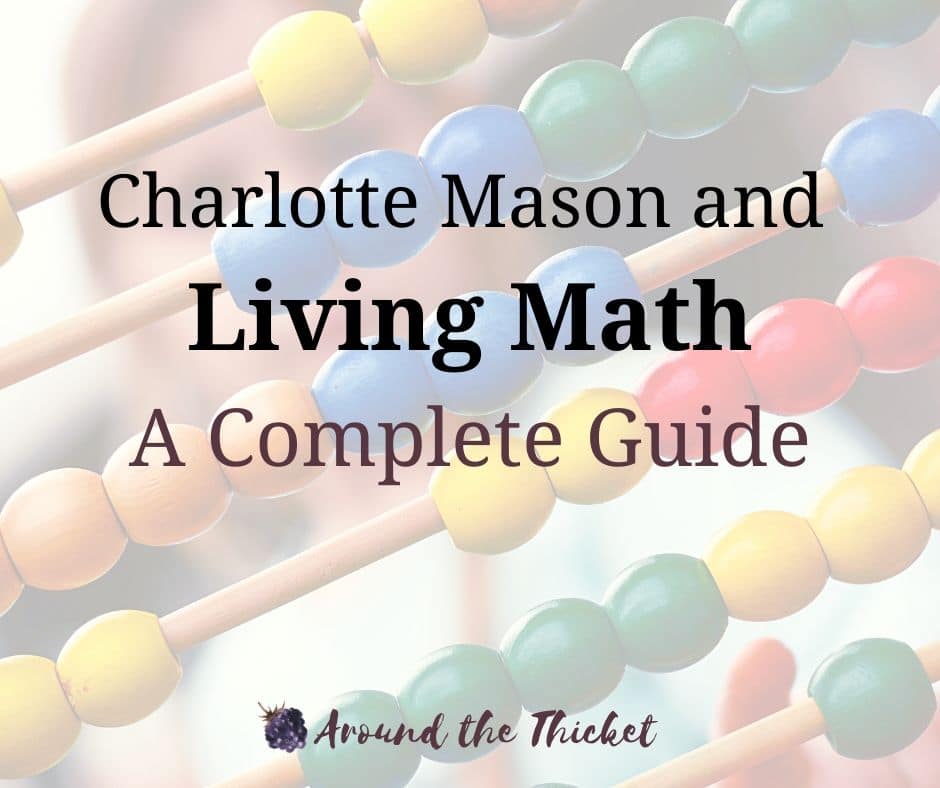
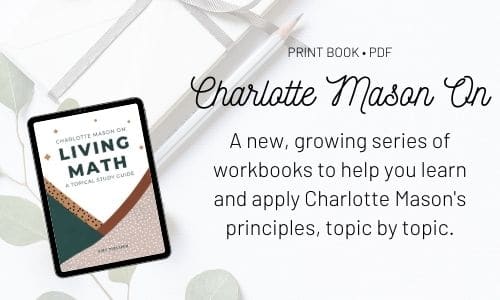

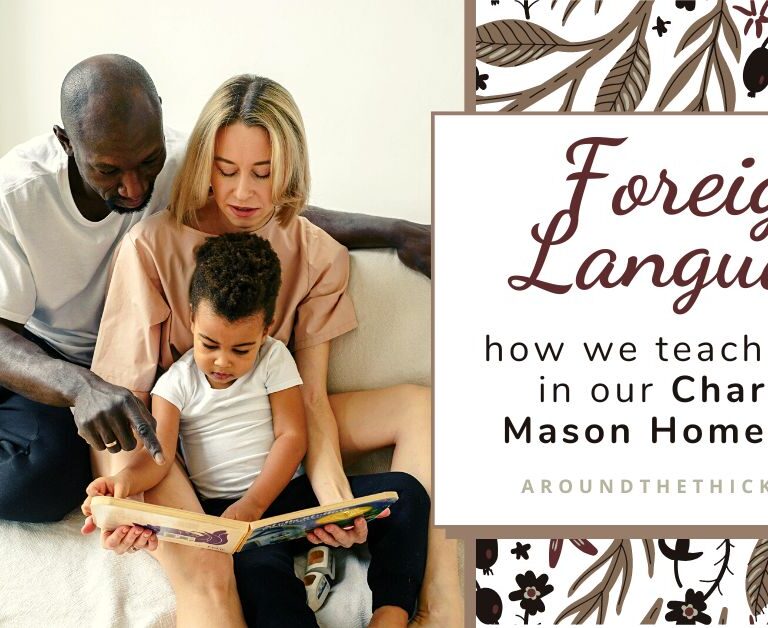



Hi Amy-
I am the administrative assistant for Julie Ross, author of A Gentle Feast curriculum and the host of The Charlotte Mason Show podcast. Julie is interested in having you read this blog post as an audioblog for an upcoming podcast. If you are interested, please email me and I can send you some details! Blessings!
Shay Kemp